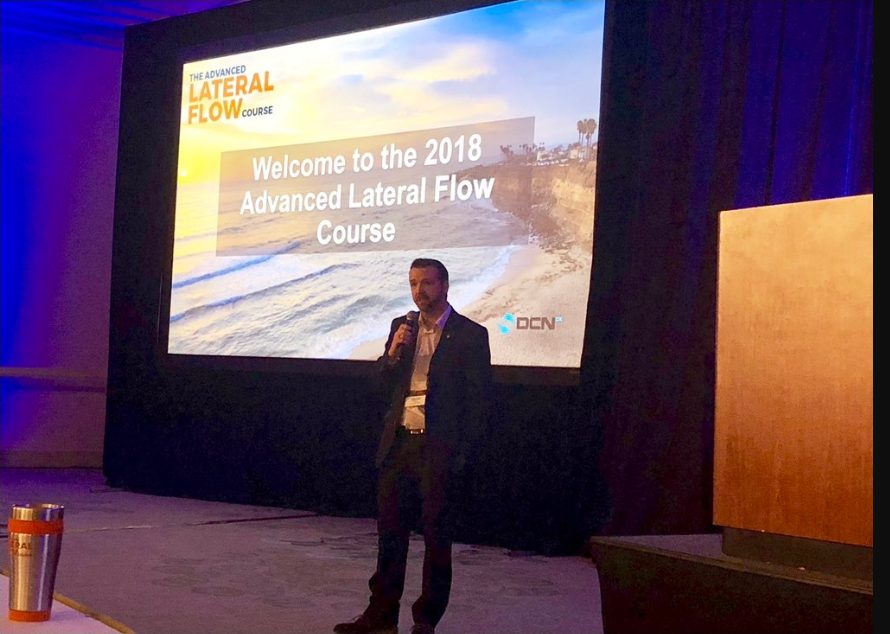
There was lots of interest in Sona’s products and services 
Sona CEO Darren Rowles addresses ALFC 2018
This week Team Sona attended the Advanced Lateral Flow Course in San Diego, hosted by DCN Diagnostics and Qiagen.
The three-day event was attended by more than 200 delegates from across the world, including lateral flow test developers, associated businesses and individuals hoping to learn more about the technology.
Across the three days there were dozens of presentations delivering a huge amount of information, from the basics of developing a lateral flow assay to advanced manufacturing processes and understanding various government regulations.
Here are eight things we learned about lateral flow at ALFC 2018.
- Lateral flow has been around for a while, but it is still developing. The first lateral flow tests were developed more than 30 years ago, which is why some people consider it ‘old’ tech. But on the contrary, there has been continuous innovation and advancement in the technology, from multiplexing to new reagents.
- The global lateral flow diagnostic test market is huge, and growing. It was worth an estimated US$5,490 million in 2017, and with a compound annual growth rate (CAGR) of 8% it will be worth US$8,240 in 2022.
- Despite this, the man who invented lateral flow, David Charlton, did not get rich from his invention. “Unfortunately I didn’t get a piece of the action,” he told us. “I got about $2.”
- Many different materials can be used as a sample – blood, saliva, urine, tears, sweat, stools, spinal fluid, plant material and even powder.
- If using a human-based sample, a number of factors can affect the integrity and utility of your sample, such as stress, exercise, diet, alcohol, smoking, medical procedures and even posture.
- There are lots of options when it comes to labels. In addition to colloidal gold, latex particles, quantum dots and cellulose nanobeads there are also lesser known options such as paramagnetic and enzymatic reagents. (Although we obviously think gold nanorods are the future.)
- There are different types of multiplexing. As well as multiple lines on one test strip you can also have multiple strips and multiple strips sharing the same sample port.
- Connections are the key to success in this market. Brendan O’Farrell, president of DCN Diagnostics, said: “This is a technology that requires an enormous amount of collaboration to be successful. You need to make connections.”